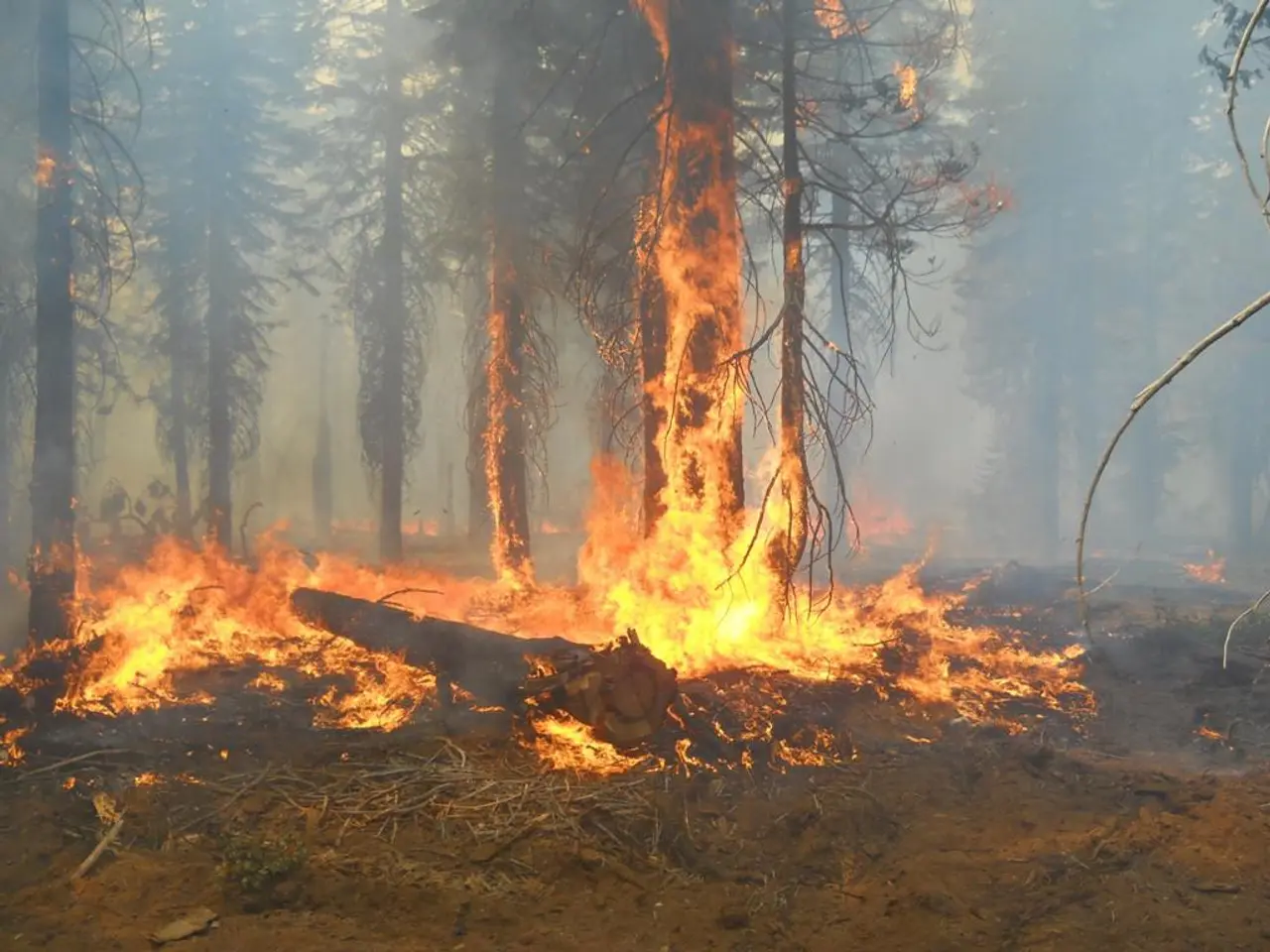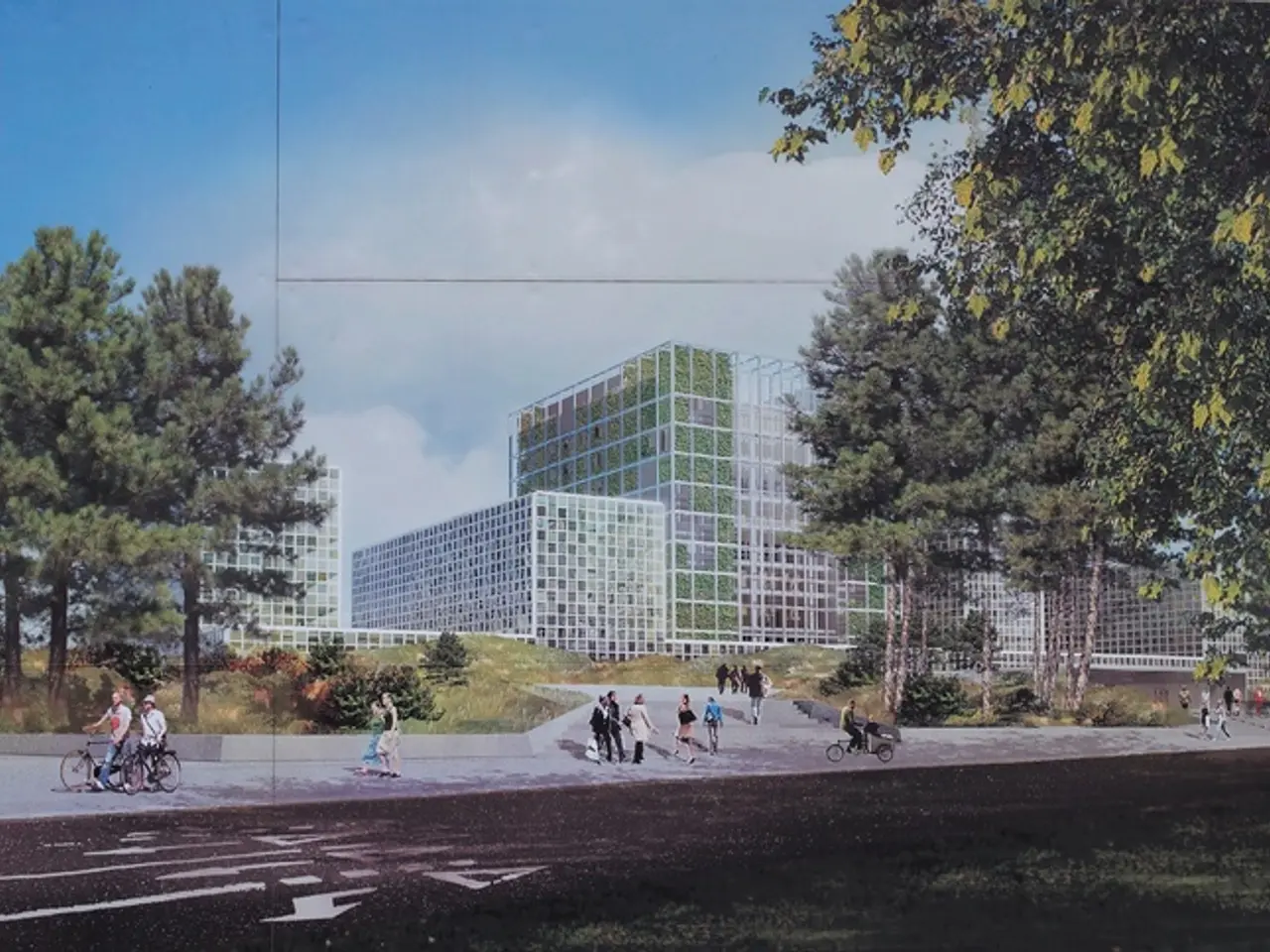Mass Exodus as Californian Forest Fires Force Residents to Evacuate
Gifford Fire Rages in Central California, Becoming Largest Wildfire of the Year
The Gifford Fire, currently burning in California's Los Padres National Forest, has grown rapidly and is now the largest wildfire in California for 2025. As of early August 2025, the fire has consumed over 100,000 acres, primarily in San Luis Obispo and Santa Barbara counties [1][4][5].
The fire started last Friday near Highway 166 and quickly expanded, driven by high winds, particularly on the northwest corner. This rapid spread has forced evacuations and threatens nearly 3,000 structures [1][2]. Injuries have been reported, with four firefighters and three civilians sustaining injuries as of the latest reports [1].
Firefighting efforts are focused on building control lines to contain the fire's growth, mopping up areas on the east and west sides, and securing the southern edge of the fire perimeter [1]. The exact cause of the Gifford Fire remains under investigation [1].
The Gifford Fire has surpassed other recent fires like the Madre Fire, which was fully contained just days before the Gifford Fire began [4]. Its size, rate of spread, and threat to communities make it a critical component of California's ongoing wildfire challenges in 2025 [1][4].
Climate change does not directly cause wildfires, but it can increase their risk. The unusually dry vegetation in the southern part of California is a result of the lack of winter rainfall. This dryness, combined with high temperatures, drought, low humidity, and wind, has made California particularly vulnerable to wildfires [2].
More than 1,900 personnel are battling the flames, working tirelessly to contain the fire and protect affected communities. The lack of winter rainfall has made the vegetation unusually dry, aiding in the propagation of wildfires. The southern part of California has experienced numerous wildfires due to this combination of factors, including climate change [2].
As of now, more than 870 buildings are threatened by the flames. California has been particularly affected by wildfires in the first half of the year, with the Gifford Fire being just one of many. After the Los Angeles area fires that claimed at least 31 lives earlier in the year, there have been numerous other wildfires [2]. By mid-July, an area of nearly 895 square kilometers had burned in California, more than twice as much as at the same time last year [3].
[1] Forest Service [2] Cal Fire [3] California Department of Forestry and Fire Protection [4] National Interagency Fire Center [5] Los Padres National Forest
- The rapid spread of the Gifford Fire highlights the importance of environmental-science and weather-forecasting in combating wildfires, as accurate predictions could help in preparing for and managing fire risks effectively.
- Despite climate change not directly causing wildfires, it contributes to their escalation by increasing the risk factors such as dryness, high temperatures, and wind, as evident in the Gifford Fire.
- The science of climate-change underscores the need for a better understanding of its impacts on the environment and weather patterns, as this knowledge could inform more effective strategies to tackle wildfire challenges like the Gifford Fire in California.








